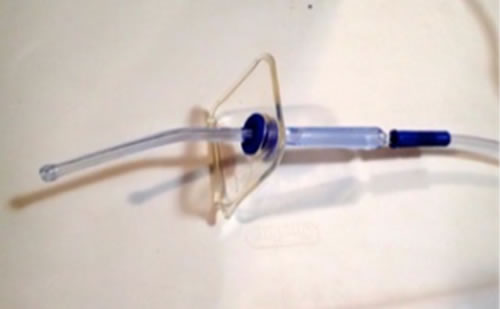Infection: Prevention and Control and the STAL Shield
Current infection prevention and control practices, ipac, focus on frontline workers, patients, and infrastructure from a ‘clean-up after” approach. By then of course the AGP has done its damage by, as the name implies, aerosolizing the infectious matter when it is released into the environment. One of the foundational tenets of personal protection considerations is that healthcare providers must assume that every patient is infectious with a potentially deadly disease. Biohazards are in the environment, contaminating virtually all exposed surfaces, equipment and people. They can remain uncontrolled and unaddressed for indeterminable lengths of time. Time that allows pathogens to spread, evolve, reproduce and re-infect. The WHO has stated that while HAI’s only receive attention from the public during outbreaks, the causative pathogens are constantly present in healthcare settings (1).
Clearly this COVID-19 pandemic has received everyones’ attention. Maximum efforts have been implemented to provide PPE to front line workers but tragically across North America hundreds of healthcare workers have died of COVID-19. Is this, even in part a consequence of putting almost exclusive trust in the lowest class of protection? If so, could any of these deaths been prevented if their victims were provided a higher level of safety? Impossible to say, but a reduction in aerosolized viral or bacterial contamination of up to 99.5% is decidedly better than 0% blockade and confinement.
Should COVID nurses and doctors, paramedics and first responders be supplied only a level of safety adjuncts considered to to be the least reliable, least complied with, most likely to fail and prone to elements of ineffectiveness? This is where past practice has led us and where we are today. This must change and the STAL Shield is a big part of that change.
Regulations and policy statements often refer to meeting the minimum standards required, or providing the minimum support… seldom the maximum. This may just be because PPE is all that has been available, equipment that is the minimum level of support.
With one notable exception: Prodaptive Medical has introduced an approach which breaks the chain of infection transmission at first link, rendering the rest of the chain minimally primed to infect. To this end, Prodaptive has developed and patented a unique, versatile at-source biohazard shield, called the STAL Shield and Stand (Figure 3). The function of this device is to substantially decrease at-source the amount and trajectory of contaminated material being released or expelled and spread into our healthcare environments by AGMP’s

Benefits of Using the STAL Shield
The STAL Shield, an engineered control, can significantly reduce surface and airborne pathogen load by blocking expulsions immediately when they leave their host. As a result, disinfectants can be more effective due to the reduced microbial load present on surfaces. In addition, PPE worn by healthcare workers will be protected, less challenged and its effectiveness ultimately strengthened. The STAL Shield is a biohazard shield that can be used in a variety of healthcare settings in a growing number of applications. The perforated central diaphragm of the shield provides a self-sealing portal through which instruments are inserted and held in place. The shield is then placed between the contaminant and the rest of the environment. The domed shape allows for clearance between the shield and the working parts of the instrument to which it is attached. The STAL has been designed to allow clear visualization, instrument control and function, while at the same time, maintaining a barrier which reflects back any dynamic contaminants which may challenge it. Every negative downstream impact and cost associated with the spread of infection from an APG can be reduced or virtually eliminated by use of the STAL Shield.
The STAL can be applied in ten separate procedures, almost all of which are high-risk and are associated with aerosolized dynamic contaminants, such as incision and drainage of abscesses, foley catheter irrigation, wound lavage, medication instillation and airway clearance. The safety performance of scalpels, syringes, saline bottles, Yankauer suction catheters, wound irrigation apparatus, drainage catheters and tubes, and other pieces of equipment is enhanced with the application of a STAL Shield. The STAL Shield offers a a highly effective source of protection for the worker, their PPE and the environment in multiple medical interventions such as airway suctioning, wound irrigation andFoley catheter irrigations, NG extubation procedures and many more. Breaking the chain of infection at the first link, the STAL Shield protects the surrounding environment and personnel by physically blocking contaminants and confining them to the immediate area.
Eight years of clinical ER application and repeated independent laboratory testing has proven that the STAL does what it says, and does it well. PPE was never the a gold standard of protection but just what was available for the past three decades. Demand the highest level, most effective and versatile infection prevention option for reducing contamination by Aerosol Generating Medical Procedures and Events. Regulations mandate it, healthcare providers, Safety Officers and Occupational Health professionals and union officials should insist on it. You couldn’t drive your ambulance without a seatbelt – it’s the same thing. It’s called the STAL Shield and it works!
This document has been edited. Original text and references can be found on the original document on our website www.prodaptivemedical.com

